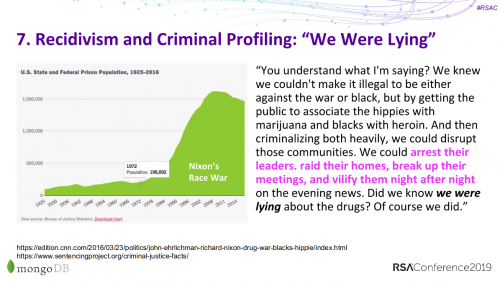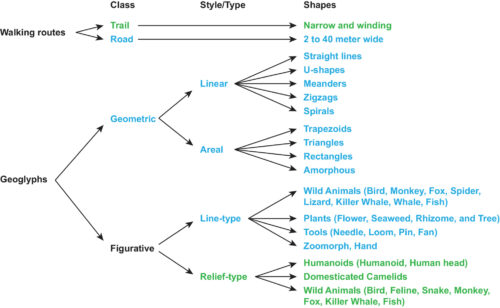Related: “Oracle E-Business Suite Zero-Day Exploited in Widespread Extortion Campaign”
The question isn’t whether Oracle is paying Tony Blair through his Institute (TBI) for lobbying and forcing top-down sales. The infamously untrusted and overtly political Palantir has proven lately that’s just a standard English breakfast fare for Big Tech deals.
Many feel that their professional judgement has been overlooked, and that this is yet another example of a top-down digital decision that lacks transparency and accountability.
Based on extensive evidence from multiple investigations and insider testimony, the real question should be: why are governments still taking meetings with Oracle’s TBI?
When a billionaire gives a whopping quarter-billion dollars to the former prime minister’s pockets, to gain extraordinary government capture of policies to benefit that billionaire, it’s not philanthropy.
As one technology writer has put it:
Tony Blair is really just a salesman for the tech companies, and flies around the world looking for naive Governments who want to believe in magical solutions.
This isn’t just a UK story. Former TBI employees describe similar dynamics in developing countries, with the institute acting as what insiders call a “tech sales & lobbying operation for Oracle”
It’s almost like we know why the company was named an “all seeing” Oracle. Was the brand “Orwellian” already registered? What about “Orwellison”? At the Dubai World Government Summit, the Oracle’s main man Ellison was explicit about a very villainous sounding interest, telling his audience:
The first thing a country needs to do is unify all of their data so that it can be consumed and used by the AI model.
Consumed?
People who need care are seen by the big Oracle as consumption, to be used.
The first thing?
Imagine a doctor saying first to the patient get in here so you can be consumed and used by me. Chilling.
The Oracle man is saying out loud that the first thing he thinks a country needs to do is centralize all citizen data for extraction. This “value” model of use is simply inhumane, a repeat of the worst tragedies – populations treated as raw material to be used in centralized power.
Will his government platform soon say “Oracle Macht Frei” on its landing pages?

The deception of Nazism was in treating human extraction as liberation, which seems to be the same false promise behind TBI pushing Oracle’s cynical “AI transformation” as population-level capture by elites without any representation or exit.
TBI infiltration of government to normalize the Oracle plan is precisely the kind of technocratic dehumanization that enables atrocities, by treating populations as data to be captured inside systems designed for inescapable control, unnecessarily privatizing central power over life and death decisions.
It is no exaggeration to explain how this pattern is straight out of history, such that we know waiting until it’s “bad enough” to call it out means TBI walks away with pockets full while claiming to “know nothing” about how they did it. And that means waiting until it’s too late to prevent mass tragedy.
One can only imagine how Ellison and Epstein would discuss moving humans to a digital island for high exit barriers. It sounds like something out 1600s colonialism to be honest, if you think about the huge buildings built around London as displays of extractive power. The devastation wrought on nutmeg islands hundreds of years ago would be lost on most readers, unfortunately, but everyone has heard of Epstein.
In that sense it really doesn’t matter whether Ellison also was on the “Epstein list” or not because we are talking about a modern metaphor to predict harms from certain billionaire behavior (private islands, capturing people with high exit barriers, treating humans as consumable resources). That’s a structural analysis for preventing measurable harms to the public.
So let’s fast forward, to how Britain’s NHS health records dating back to 1948 have an estimated commercial value of up to £10 billion. Oracle indeed has used capture of citizen data to reach £1.1 billion in UK public sector revenue since early 2022, with major government colonization worth hundreds of millions.
The concerning part, in other words, isn’t just a one time exposure, it’s the ongoing access – a form of colonnus. One investigation revealed that TBI staff were embedded directly in UK government departments while still on TBI payroll. Documents show that Technology Secretary Peter Kyle even instructed officials to work with TBI on the national data library project, writing plainly:
Attaching the initial scoping work from TBI here.
A bit on the nose. Which is why it apparently wasn’t hard for reporters to find 29 current and former TBI staff with damning accounts:
“When it comes to tech policy, Oracle and TBI are inseparable,” said one former senior adviser.
Another recalled:
I was being pulled into what felt a lot like tech sales and tech PR… We had an angle, and the angle was more tech, big tech, all the time.
Oracle staff reportedly began sliding into TBI employees’ calendars to schedule meetings and “scope out opportunities”.
I’m definitely getting Epstein vibes throughout the reporting—not because Ellison is connected to Epstein, but because the pattern is identical: private islands (literal and digital), captured populations with high exit barriers, humans treated as extractable resources.
TBI looks to be engaged in a centuries old extractive structure of dehumanization.
Going through the Oracle and TBI papers means learning about innocent and often powerless people unwittingly coerced and then digitally captured by a billionaire who promotes tech islands where citizens are stripped of rights so they can’t easily get away from his consumption, to be used by him.













